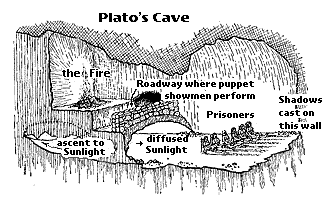Many Guardian readers will have seen this quote, attributed to a 1998 interview with Donald Trump in People magazine, in their Facebook news feed.
It’s a great quote, but he never said it.
It typifies the kind of fake news and misinformation that
has plagued the 2016 election on an unprecedented scale. In the wake of
the surprise election of Donald Trump as president of the United States,
pressure is growing on Facebook
to not only tackle the problem but also to find ways to encourage
healthier discourse between people with different political views.
Rather than connecting people – as Facebook’s euphoric
mission statement claims – the bitter polarization of the social network
over the last eighteen months suggests Facebook is actually doing more
to divide the world.
-
So as a number of you are doing 'grime' magazines, I thought I would write a post about grime music photography because so many of you take photos that are too dark and seem to not have the basic elements of photography such as mise en scène. Lets have a look at some examples..
Even though Grime music tends to be a dark, urban, gritty, even dangerous style of music in terms of its content, lyrics and characterisations you can see that in magazine photography they still need to get strong light sources in to keep the image quality high:
(I know this is from the 'shutdown' video but still!)The use of props and costume can also be important. Not to mention the specific positioning of the models and the composition of the shot itself.Facial expressions and close ups can also make the photo more engagingHopefully these are some photos to get you thinking about what you can do, but remember use a strong light source (even daylight!) and think about what is going to make your photo be unique and not just two people standing in a stair well in the block!!
-
-
Its getting to that time at the moment where all of our productions are starting to feel like we have been doing them for a long time. To get some fresh ideas into your production work start having a look at some quality creative pieces of video work here at Vimeo:
https://vimeo.com/
Start thinking about which ideas from these videos could inspire your productions!
-
So your pre production should be well and truly finished as we all need to be out filming now, but just as a final check if you blog has any hope of reaching the top level range of marks then as a general rule you need to have included:
Target audience profile
Target audience interviews and primary research
Genre History and conventions analysis
Secondary research of Genre : CD covers / moodboard etc
Mise en scene analysis of real music videos
Inspirations : analysis of real music videos
Band Design work (sketches of fonts and band names, along with group props and costumes)
Location research
Health and Safety of locations
Email record label to ask permission
The pitch
Video of the pitch
Annotated Lyrics with storyline and ideas
Narrative outline / map
Casting decisions - photos of actors and character information
Props and costume research
Storyboards and Animatics
Shot lists explaining the plan for the first few days of filming
Phew! Thats it...
...But remember the posts need to be detailed, show real insight and use technical terminology throughout.
Good luck -
How did an openly racist, anti-muslim, misogynistic, disability mocking crazy man end up in the most powerful elected position in the world? It can't be just that every single person who voted for him was stupid. So how did he convince seemingly reasonable' people to vote for him.
Maybe the Media has something to answer for. Read the article below and try to explain how Facebook and Google help polarize public opinion like never before:
https://www.theguardian.com/technology/2016/nov/10/facebook-fake-news-election-conspiracy-theories
The company is being accused of abdicating its responsibility to clamp down on fake news stories and counter the echo chamber that defined this election
“If I were to run, I’d run as a Republican. They are the dumbest group of voters in the country. They believe anything on Fox News. I could lie and they’d still eat it up. I bet my numbers would be terrific.”
Subscribe to:
Comments (Atom)













